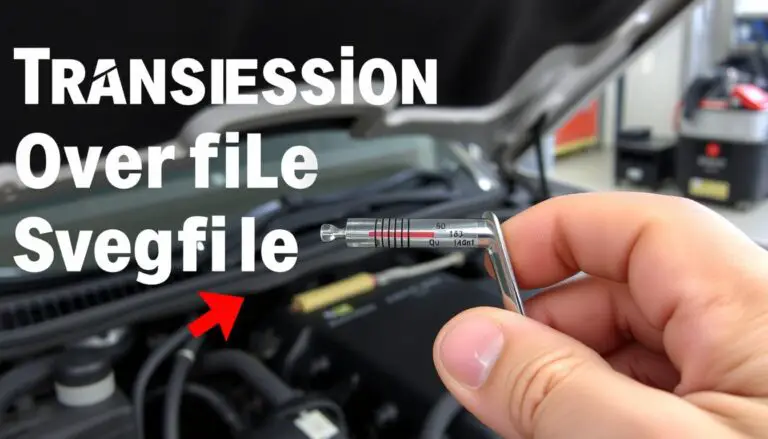The functionality of an air conditioning system is critical for a comfortable driving experience, notably during the scorching summer months. Over time, the cooling efficiency of your car’s AC system may diminish due to a reduction in refrigerant levels.
Recharging the AC system can be a straightforward process, provided you have the appropriate guidance. By following a few simple steps, you can restore your car’s AC to its peak performance, ensuring a cool and comfortable ride.
Key Takeaways
- Maintaining your car’s AC system is essential for optimal performance.
- Recharging the AC system can be a simple DIY task.
- Regular car maintenance can help prevent AC system issues.
- A well-functioning AC system improves driving comfort and safety.
- Recharging your car’s AC can be done in a few easy steps.
Understanding Your Car’s AC System
The complexity of your car’s AC system necessitates a profound comprehension for its maintenance and recharging. Its primary objective is to cool the air within your vehicle by transferring heat from the interior to the exterior.
How Car AC Systems Work
The operation of the car AC system revolves around a cycle, encompassing pivotal components: the compressor, condenser, expansion valve, and evaporator. The compressor elevates the refrigerant’s temperature and pressure through compression. The hot refrigerant then transitions to the condenser, where it relinquishes heat and condenses into a liquid state. This liquid then traverses the expansion valve, where its pressure is diminished, facilitating expansion. Ultimately, it reaches the evaporator, where it absorbs heat from the vehicle’s interior, evaporating into a gas and cooling the air.

Common Refrigerant Types
Contemporary vehicles predominantly employ R-134a or R-1234yf refrigerants. For example, numerous Toyota models, including the Toyota Tacoma, utilize R-134a. It is imperative to identify the refrigerant type specific to your vehicle to circumvent compatibility issues during recharging.
Signs Your AC Needs Recharging
Indications that your car’s AC may require recharging include the emission of warm air or a diminished cooling efficiency. Additional signs encompass unusual noises emanating from the AC system or visible refrigerant leakage. For a comprehensive guide on recharging your car’s AC, refer to resources such as Instructables.
| Signs | Description |
|---|---|
| Warm Air | AC blowing warm air instead of cold |
| Reduced Cooling | AC not cooling as efficiently as before |
| Unusual Noises | Strange sounds coming from the AC system |
| Visible Leaks | Signs of refrigerant leakage around the AC components |
Tools and Materials You’ll Need
To successfully recharge your car’s AC, you must gather the appropriate tools and materials. This is crucial for an efficient and safe process.
Essential Recharging Kit Components
A car AC recharge kit is indispensable for the recharging process. It encompasses several key components:
Refrigerant Canisters
These contain the refrigerant essential for your AC system’s operation. It is imperative to select the correct type for your vehicle.
Pressure Gauge and Hose
A pressure gauge is vital for monitoring the system’s pressure. The hose, on the other hand, connects the refrigerant canister to your car’s AC system.
Safety Equipment Requirements
Safety must be paramount when working with AC systems. Essential safety equipment includes:
Gloves and Eye Protection
Gloves are crucial for protecting your hands from cold temperatures and potential chemical exposure. Eye protection is equally important to safeguard against refrigerant splashes.
Workspace Considerations
Your workspace must be well-ventilated and devoid of ignition sources. A safe environment is essential when handling refrigerants.

| Tool/Material | Purpose |
|---|---|
| Recharge Kit | Contains refrigerant and necessary hoses |
| Gloves | Protects hands from cold and chemicals |
| Eye Protection | Safeguards against refrigerant splashes |
By assembling the necessary DIY tools and safety equipment, you will be adequately prepared to recharge your car’s AC system effectively and safely.
Preparing Your Vehicle for AC Recharging
Initiating the recharging of your automobile’s air conditioning system necessitates a thorough preparation phase. This entails a comprehensive understanding of the AC system’s components and the adoption of stringent safety protocols.
Finding the Low-Pressure Port
The low-pressure port is an indispensable element for the recharging of your vehicle’s AC system. It is commonly situated on the larger diameter hose, positioned between the compressor and the evaporator. For precise identification, refer to your vehicle’s manual or the manufacturer’s website, as the location can vary by model. The port is typically capped and marked, facilitating its differentiation from other system components.
Safety Precautions Before Starting
Ensuring safety is paramount when engaging with your vehicle’s AC system. Protective attire, such as gloves and safety glasses, is imperative to safeguard against potential refrigerant leaks or other hazards. The workspace should be adequately ventilated to avert the inhalation of refrigerant fumes. If any aspect of the process appears ambiguous, seeking the counsel of a professional is advisable.
| Safety Precaution | Description |
|---|---|
| Wear Protective Gear | Gloves and safety glasses to protect against refrigerant leaks |
| Ensure Good Ventilation | Prevent inhalation of refrigerant fumes |
| Consult a Professional | If unsure about any part of the AC recharging process |
How to Recharge Your Car AC: Step-by-Step Process
To restore your vehicle’s air conditioning system to optimal functionality, adherence to a meticulous step-by-step procedure is imperative. This ensures a successful recharge, enhancing the system’s cooling efficiency.
Step 1: Check the Current Refrigerant Level
Initiating the recharging process necessitates an initial assessment of the refrigerant level within your car’s AC system. This preliminary step is crucial for determining the necessity of a recharge and quantifying the required refrigerant volume.
Reading the Pressure Gauge
The pressure gauge emerges as a pivotal tool for gauging the refrigerant level. Accurate reading of this gauge, attached to the low-pressure port of the AC system, reveals the current pressure, which directly correlates with the refrigerant level.
Understanding Optimal Pressure Levels
Optimal pressure levels are contingent upon the refrigerant type and ambient temperature. Typically, the low-side pressure should oscillate between 25-35 psi when the AC is operational. For precise recommendations, consult your vehicle’s manual or the manufacturer’s guidelines.
Step 2: Attach the Recharge Kit
Upon confirmation of the AC’s need for a recharge, the recharge kit must be securely attached to the low-pressure port. It is imperative to ensure compatibility with your car’s AC system and the refrigerant type.
Step 3: Start the Engine and AC System
With the recharge kit affixed, initiate your vehicle’s engine and activate the AC to its maximum cooling setting. This step is indispensable as it facilitates the circulation of refrigerant through the system.
Step 4: Add the Refrigerant
The subsequent step involves the addition of refrigerant. Adherence to the recharge kit’s instructions is paramount to ensure the correct volume is added.
Proper Technique for Adding Refrigerant
When introducing refrigerant, the process should be executed with deliberate slowness and vigilant monitoring of the pressure gauge. The objective is to attain the recommended pressure level without overcharging the system, which could potentially damage the AC system.
Monitoring Pressure While Filling
Continuous observation of the pressure gauge during refrigerant addition is essential. Frequent checks of the gauge are necessary to prevent overcharging, a condition that could compromise the AC system’s integrity.
| Refrigerant Type | Optimal Low-Side Pressure | Optimal High-Side Pressure |
|---|---|---|
| R-134a | 25-35 psi | 150-250 psi |
| R-1234yf | 20-30 psi | 150-250 psi |
Step 5: Test the AC Performance
Post-recharge, the AC’s performance must be evaluated by assessing the air temperature emanating from the vents and listening for any anomalous noises. A properly functioning AC should deliver cool air and operate with minimal noise.
Troubleshooting Common AC Recharging Issues
Addressing AC recharging problems necessitates a meticulous troubleshooting approach to efficiently pinpoint and rectify issues. Despite meticulous adherence to the recharging protocol, some vehicle proprietors may encounter persistent AC system performance anomalies.
AC Still Not Cooling After Recharge
Should your vehicle’s AC fail to cool post-recharge, various underlying factors could be at play. A clogged condenser coil or a dysfunctional compressor are common culprits. It’s also plausible that the refrigerant level, despite recharging, remains suboptimal due to leaks or system inefficiencies.
“A thorough inspection is crucial to determine the root cause of the cooling issue.” Automotive specialists underscore the importance of scrutinizing the system’s electrical components and verifying the integrity of all connections to pinpoint the problem.
Detecting Leaks in the AC System
Identifying leaks is paramount in troubleshooting AC malfunctions. Leaks can precipitate a gradual refrigerant depletion, impairing system efficiency. Employing a leak detection kit facilitates the identification of refrigerant escape points.
Overcharging Problems and Solutions
Excessive refrigerant in the AC system can elevate pressure, potentially damaging the compressor or other components. Symptoms indicative of overcharging include noisy operation and diminished cooling efficacy. To mitigate this, it is imperative to release the surplus refrigerant with caution.
When to Seek Professional Help
While many AC recharging challenges can be navigated through DIY troubleshooting, certain complexities necessitate professional intervention. If self-diagnosis and resolution prove elusive, it is prudent to consult a certified mechanic. They can offer a detailed diagnosis and execute necessary repairs.
As underscored by industry experts,
“Knowing when to seek help is crucial for avoiding further damage to your car’s AC system.”
Conclusion
Initiating the recharging of your vehicle’s AC system is merely the commencement of a broader maintenance regimen. The necessity of consistent car AC maintenance cannot be overstated, as it is pivotal to sustaining its operational efficacy. Adherence to the DIY car care methodologies delineated within this discourse will facilitate a cooler, more salubrious vehicular excursion.
Proper car AC maintenance necessitates the identification of leaks, thorough inspection of the AC system’s components, and the requisite refrigerant recharging. These elementary automotive directives serve as a bulwark against exorbitant repair expenditures and are instrumental in prolonging the AC system’s lifespan.
Investing time in comprehending and maintaining your vehicle’s AC system will yield a more agreeable driving ambiance, concurrently fostering vehicular efficiency. Delve into additional DIY automotive endeavors to augment your vehicle’s performance and durability.
FAQ
What are the signs that my car’s AC needs recharging?
Indicators of a need for AC recharge include diminished airflow, lukewarm air emanating from the vents, or the AC failing to activate. A hissing sound or the formation of ice on AC components also signify a recharge necessity.
Can I recharge my car’s AC system myself?
Self-recharge of your vehicle’s AC system is feasible with the appropriate tools and adherence to proper procedures. It is imperative, though, to comprehend the process and exercise caution to avert accidents or injuries.
What type of refrigerant should I use for my car’s AC system?
Refrigerant selection hinges on your vehicle’s make and model. Common refrigerants include R-12, R-134a, and R-1234yf. Refer to your vehicle’s manual or the AC system’s label to ascertain the requisite refrigerant type.
How do I find the low-pressure port on my car’s AC system?
The low-pressure port is typically marked and situated on the larger diameter hose between the compressor and the evaporator. Consult your vehicle’s manual or a diagram to pinpoint its exact location on your specific model.
What safety precautions should I take when recharging my car’s AC?
Safety measures during AC recharge include donning protective gloves and eye protection to avert injury from refrigerant or system components. Ensure the area is well-ventilated and avoid overcharging the system.
How do I know if I’ve overcharged my car’s AC system?
Overcharging indicators include elevated pressure readings on the gauge, unusual noises from the AC compressor, or refrigerant leaks. If overcharging is suspected, cease the recharging immediately and seek professional assistance.
Can I detect leaks in my car’s AC system?
Leak detection in your vehicle’s AC system is feasible through a leak-down test or by applying a soapy solution to the components. Bubbles will indicate the presence of a leak. For more precise results, consider utilizing a leak detection kit.
What should I do if my car’s AC still isn’t cooling after recharging?
If the AC remains ineffective post-recharge, inspect for leaks, examine the AC components for damage, and verify that the system is free from blockages. Persistent issues necessitate professional intervention from a certified mechanic or AC specialist.


